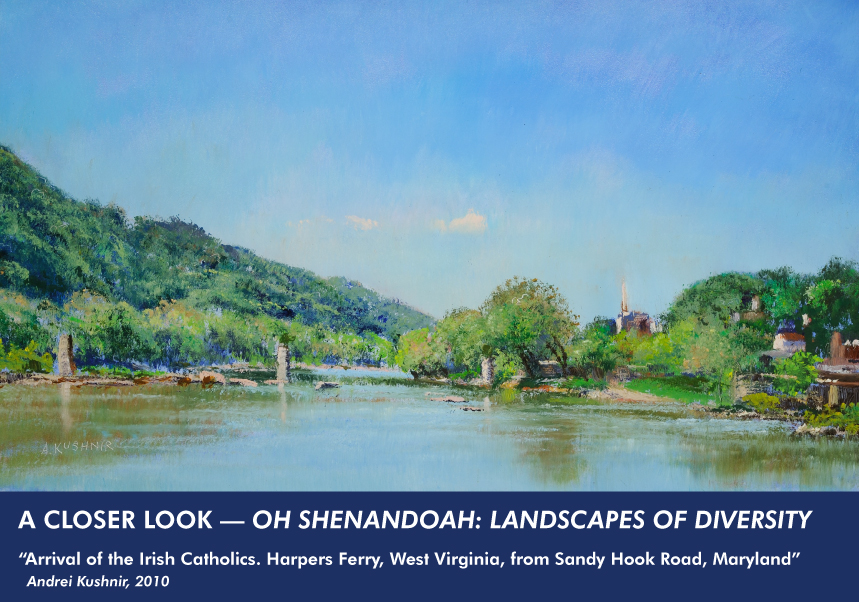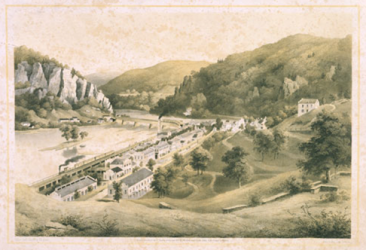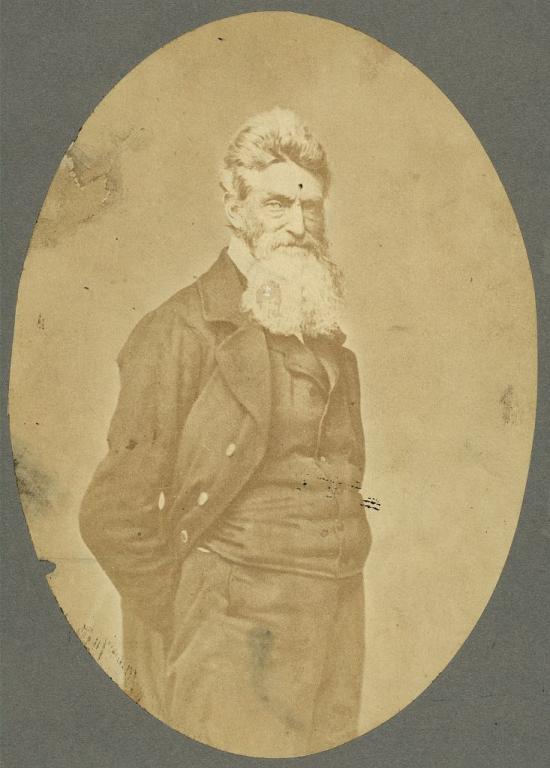Featuring 52 masterful landscape paintings by Washington, D.C. based artist Andrei Kushnir, the VMHC past exhibition Oh, Shenandoah: Landscapes of Diversity explored the extraordinary beauty of the Shenandoah Valley region and the diverse history of its settlement.
VMHC past volunteer Kathi Wong delved into the history of some of the exhibition's featured works. In this article, she examines the history of the Harpers Ferry area, inspired by Andrei Kushnir's 2010 painting, “Arrival of the Irish Catholics. Harpers Ferry, West Virginia, from Sandy Hook Road, Maryland.”


 In his painting, Kushnir takes his viewpoint from the more northerly Maryland angle, catching sight of the face of St. Peter’s Catholic Church. The visitor, though, will likely first walk the quiet lower streets of Harpers Ferry -- a stroll through time, where there is an abandoned feeling due to frequent flooding. Steep lanes weave up and around to shops in historic buildings, and a path leading even more steeply upward is the way to the church. Originally built in 1833, St. Peter’s commands a sweeping vista of the rivers and the adjacent lush Shenandoah Valley fields.
In his painting, Kushnir takes his viewpoint from the more northerly Maryland angle, catching sight of the face of St. Peter’s Catholic Church. The visitor, though, will likely first walk the quiet lower streets of Harpers Ferry -- a stroll through time, where there is an abandoned feeling due to frequent flooding. Steep lanes weave up and around to shops in historic buildings, and a path leading even more steeply upward is the way to the church. Originally built in 1833, St. Peter’s commands a sweeping vista of the rivers and the adjacent lush Shenandoah Valley fields.